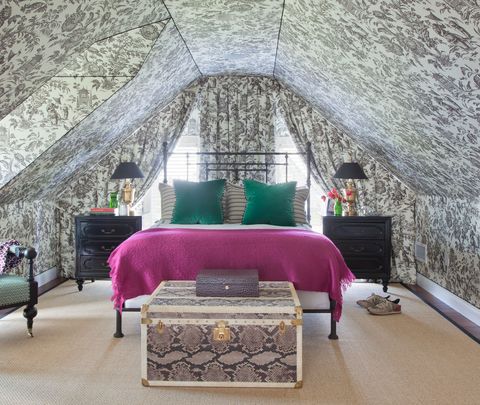">Top Guidelines Of How To Hang Wallpaper - York WallcoveringsTop Guidelines Of Wallpapering 101: Wallpaper Installation - Wayfair
How to set up wallpaper: Draw up the room, Use a full roll of paper as a guide to lay out the room. Butt a roll into the corner where you plan to start, and make a pencil mark on the wall at the edge of the roll. Slide the roll down to that mark, and make another pencil mark at the other edge of the roll.
You may have to cut down the first panel to prevent hanging little strips (3 in. or less) near doors and corners. Wallpaper seams on straight walls are butted, not overlapped, however joints are less visible if you place them at the point farthest from where the first panel was set up.
Don't presume the corner you're beginning in is plumb. Utilize a level and draw a straight plumb line about 1/4 in. past where you desire the very first panel of paper to end. Take into account that inside corner seams need to be overlapped at least 1/8 in. For more details, see "Seam Inside Corners" listed below.
The Greatest Guide To How To Install Peel And Stick Wallpaper - Roommates Decor
The corner simply above the entry is usually the best area. Preparation the walls, Utilize a "wall size" primer/sizing product, Utilizing wall size will assist the paper follow the wall and lower the opportunity that the paper will shrink. It likewise makes it much easier to eliminate the paper when the time comes.
It also makes it simpler to remove the paper when the time comes. One-gallon containers are available at house centers. And never, hang wallpaper over unfinished drywallit won't ever come off if you do (wallpaper installers). Make certain all the walls have at least one coat of guide. Plus: Discover another trend with interior walls: ombre wallpaper.
off the roll to make the poodle on the next panel line up with the first one. This means you'll be utilizing 9 ft. of paper for each 8 ft. of wall. In this case, you would multiply the direct feet of the space by 9 ft. instead of 8 ft.

Use a high-quality 1/2-inTop quality-nap paint roller cover to apply pastethe inexpensive ones will leave fuzz balls all over the paper. When dealing with prepasted products, Bob prefers to utilize a paint roller to roll the water on the paper. Submerging paper in a tray is messy and doesn't guarantee uniform coverage.
This lets you hang the paper plumb, regardless of how plumb the corner is. The very first panel set up in a corner needs to be overlapped onto the surrounding wall at least 1/8 in.
Chesapeake Wallpaper Collection - Sherwin-williams Fundamentals Explained
Cut the corner panel 1/8 in. longer than the longest of the 3 measurements (wallpaper hangers near me). You can utilize the leftover piece to begin the new wall, but you may need to cut it at a small angle to accommodate a misaligned corner. Some wallpaper will not adhere to other wallpaper, so run a small bead of joint adhesive in the corner prior to overlapping the second piece.
Vinyl items are better fit for bathrooms and cooking area and hallways, but not all vinyl wallpapers are the same. Some are solid vinyl, others have a vinyl face with a paper backing, and some are mostly paper with a thin vinyl finishing. Solid vinyl wallpaper is the most resistant to moisture and the most washable.
Book the paper before hanging, Fold the paper in thirds, Fold the paper so that when you unfold it, you'll be dealing with two-thirds of the panel. Roll the paper, After you have actually folded a length of paper, roll it. Set each roll in front of the wall where it's going to be hung.
Some Known Incorrect Statements About How To Hang Wallpaper Using The Proper Wallcovering Tools
It enables time for the paste to activate and the paper to soften. Fold the paper so that when you unfold it, you'll be dealing with two-thirds of the panel. The longer the paper, the simpler it is to get directly. Cut a bunch of notepads simultaneously, and book a number of at the same time.

If you're a newbie, set them in a plastic bag to give you more time to work with them. Carefully smooth out the paper, Use a smoother, Run a smoother over every square inch of the paper. Do not press too difficult and squeeze out the paste or extend the paper.
Don't press too hard on your smoother or you'll squeeze out the paste and extend the paper. This is especially crucial when you're working with prepasted paper. Stretched-out paper with insufficient paste behind it is guaranteed to diminish when it dries. Shrinking causes spaces in the seamsgaps are bad.
• i loved thissee this here
•